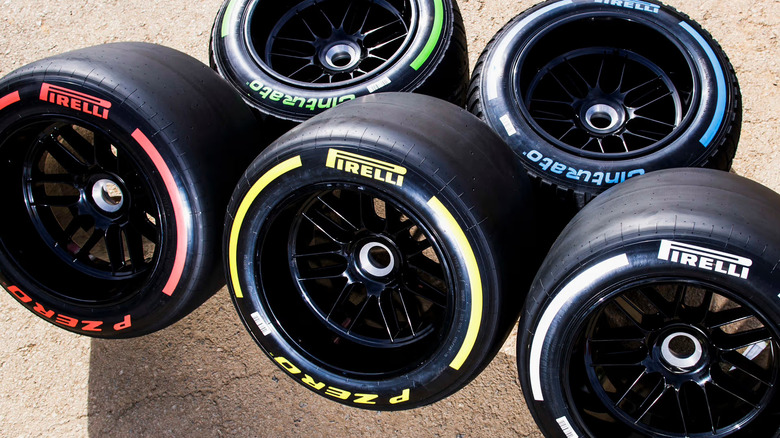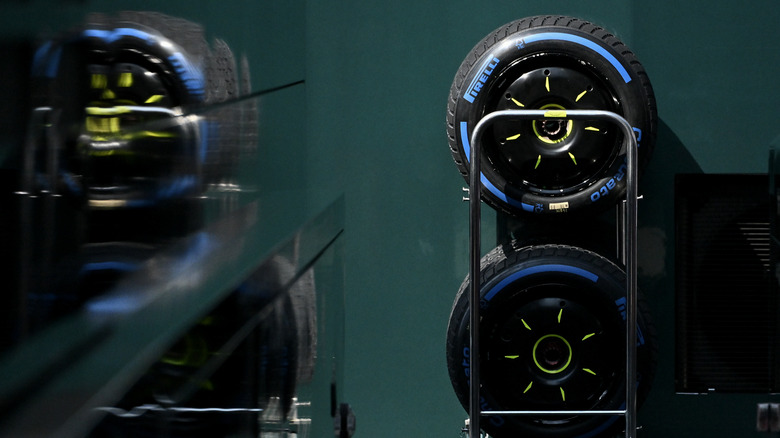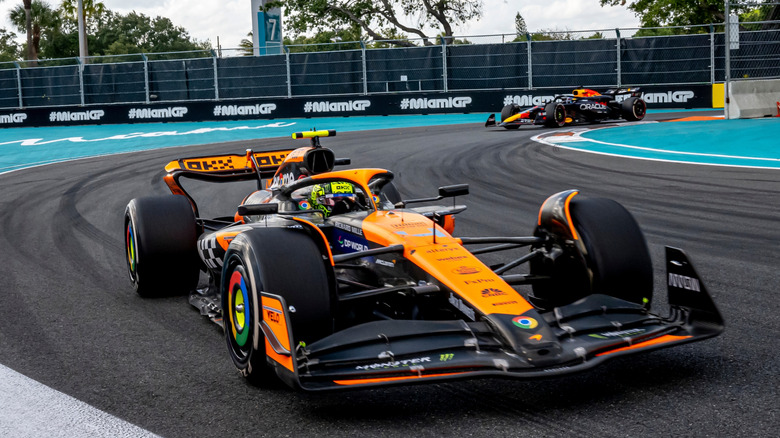What Do The Different Colors On F1 Tires Mean?
F1 cars are seriously quick vehicles, with the fastest F1 cars ever capable of hitting speeds in the region of 210 to 220 mph. Valterri Bottas currently holds the record there with a top speed of 231 mph. Their high levels of downforce enable them to carry much of that speed through the corners, too, which means the tires take a serious beating at every single turn.
Currently, tire supplier Pirelli provides teams with slicks in three different compounds — hard, medium, and soft — plus wet-weather tires, rated as full-wets or intermediates. Pre-determined colors indicate which is which: white signifies the hard compound, yellow is the medium compound, and red is for the softest slick available. Intermediate tires get a green stripe, while the wets get a blue one, making it easy to identify which tires each team is running in poor weather, too.
The softer the tire, the grippier it is when operating at temperature, which makes it ideal for setting fast laps during qualifying. However, soft tires also degrade faster, which is why medium or hard compound tires are usually the tires of choice during the race, as these allow the drivers to complete more laps without having to pit.
Understanding F1 tires
For each race, Pirelli will choose three of the six slick compounds it manufactures — C1 to C6, from hardest to softest — to be the tires of choice. The compounds chosen will depend on the conditions present at each track, with softer tires tending to be picked for city tracks, and harder tires used at high-wear tracks with fast cornering speeds, such as Silverstone and Suzuka. Teams will have the option of intermediate and wet tires at each track, regardless.
During the race, each driver will have to use at least two different slicks, which mandates at least one pit stop per driver. This is not the case during wet weather. Unusually, during the recent 2025 Monaco Grand Prix, the FIA ruled that drivers would have to use all three tire compounds, forcing at least two pit stops. This was done in an attempt to make the race more exciting, and is not standard practice.
Unlike the slick tires, the wet-weather tires have deeper tread patterns to help disperse the water efficiently. Changing to wet tires is always a tricky time for teams, as changing from slick to wet tires at the wrong time could result in the driver losing a significant amount of time and pace on the track.
F1 teams use a lot of tires
Once Pirelli has outlined which three compounds of tire teams will use for the race, they can then look to determine their tire loadout for the race. Each driver gets a huge number of tires, including 13 sets of dry weather, or slick, racing tires, four sets of intermediates, and three sets of wet tires. The amount of tires an F1 team uses in a season is quite huge, then — almost 3,800, once you consider each possible tire for both drivers within a team.
If you're wondering what happens to used F1 tires after a race, the answer is quite simple. Rather than simply being discarded, used F1 tires are returned to Pirelli and then recycled, which is all part of F1's initiative in being as green and environmentally responsible as possible. Each tire is tracked individually, and teams will be fined if they lose any.


